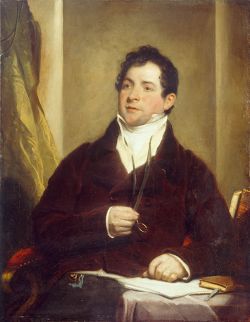Annotation:Last Rose of Summer (The): Difference between revisions
No edit summary |
No edit summary |
||
| (5 intermediate revisions by 2 users not shown) | |||
| Line 1: | Line 1: | ||
---------- | |||
---- | {{TuneAnnotation | ||
|f_tune_annotation_title=https://tunearch.org/wiki/Annotation:Last_Rose_of_Summer_(The) > | |||
'''LAST ROSE OF SUMMER, THE'''. AKA and see "[[Groves of Blarney (The)]]." Irish, Air. F Major (Howe, O'Flannagan): G Major (Scanlon). Standard tuning (fiddle). One part (O'Flannagan): AABA (Howe): ABBA (Scanlon). "'Tis the last rose of summer" is the title of a song by Thomas Moore [http://en.wikipedia.org/wiki/Thomas_Moore], and appears in '''A Selection of Irish Melodies''' (No. 4, Book 5, 1813), to the older tune of "The Groves of Blarney. | |f_annotation='''LAST ROSE OF SUMMER, THE'''. AKA and see "[[Groves of Blarney (The)]]," "[[Young Man's Dream (The)]]." Irish, Air. F Major (Howe, O'Flannagan): E Flat Major (Haverty): G Major (Scanlon). Standard tuning (fiddle). One part (O'Flannagan): AB (Haverty): AABA (Howe): ABBA (Scanlon). "'Tis the last rose of summer" is the title of a song by Thomas Moore [http://en.wikipedia.org/wiki/Thomas_Moore], and appears in '''A Selection of Irish Melodies''' (No. 4, Book 5, 1813), to the older tune of Alfred Milliken's "The Groves of Blarney" (which itself is said to have been borrowed from a seventeenth-century harp melody). Moore's volume has been described as a "veritable cornerstone of bourgeois 'popular song'"<ref>Scott, The Singing Bourgeois : Songs of the Victorian Drawing Room and Parlour, p. 25. </ref>, and was generally much admired in the parlor room, although a few songs were considered impolite in theme. | ||
<br> | <br> | ||
<br> | <br> | ||
See also Pipe Major William Robb's melodically similar retreat march "[[When the Battle's O'er]]." | |||
'' | |||
<br> | <br> | ||
<br> | <br> | ||
The tune was played for dancing (probably as a waltz) by a 1912 dance band in Orchards, Washington, led by fiddler Arthur D. Streeter. | |||
[[File:moore.jpg|250px|thumb|left|Thomas Moore (1779-1852)]] | |||
'' | |f_source_for_notated_version= | ||
|f_printed_sources=P.M. Haverty ('''One Hundred Irish Airs vol. 2'''), 1858; No. 187, p. 84. Howe ('''1000 Jigs and Reels'''), c. 1867; p. 114. O'Flannagan ('''The Hibernia Collection'''), 1860; p. 30. Batt Scanlon ('''The Violin Made Easy and Attractive'''), 1923; p. 24. | |||
|f_recorded_sources= | |||
|f_see_also_listing= | |||
}} | |||
------------- | |||
---- | |||
Latest revision as of 16:28, 18 June 2024
X:1 T:Last Rose of Summer, The M:3/4 L:1/8 R:Air Q:"Andante Affetuoso" B:P.M. Haverty – One Hundred Irish Airs vol. 2 (1858, No. 187, p. 84) Z:AK/Fiddler’s Companion K:Eb E>F|G2e2 (c>B) |(BG3) (E>F)|G2 (AG) {G}(F>E)|[G,4G4] (E>F)| G2e2 {d}(c>B)|(BG3) (E>F)|G2 (AG) {G}F>E|[G,4E4]|| (B>G)|e2 (e>d) {d}c>B|(B2G2) (B>G)|e2 (e/d/c/=B/)|c2 {=Bcd}!fermata!e2 (E>F)| G2e2 {d}(c>B)|(BG3) (E>F)|G2 (AG) {G}(F>E)|[G,4E4]||
LAST ROSE OF SUMMER, THE. AKA and see "Groves of Blarney (The)," "Young Man's Dream (The)." Irish, Air. F Major (Howe, O'Flannagan): E Flat Major (Haverty): G Major (Scanlon). Standard tuning (fiddle). One part (O'Flannagan): AB (Haverty): AABA (Howe): ABBA (Scanlon). "'Tis the last rose of summer" is the title of a song by Thomas Moore [1], and appears in A Selection of Irish Melodies (No. 4, Book 5, 1813), to the older tune of Alfred Milliken's "The Groves of Blarney" (which itself is said to have been borrowed from a seventeenth-century harp melody). Moore's volume has been described as a "veritable cornerstone of bourgeois 'popular song'"[1], and was generally much admired in the parlor room, although a few songs were considered impolite in theme.
See also Pipe Major William Robb's melodically similar retreat march "When the Battle's O'er."
The tune was played for dancing (probably as a waltz) by a 1912 dance band in Orchards, Washington, led by fiddler Arthur D. Streeter.

- ↑ Scott, The Singing Bourgeois : Songs of the Victorian Drawing Room and Parlour, p. 25.

